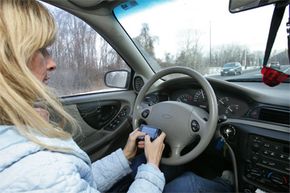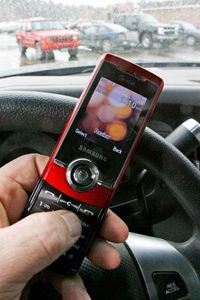Texting, or short message service (SMS), is a quick form of communication that allows users to send 160 characters or less to and from their cell phones and smartphones. A study by the Pew Research group in 2009 and 2010 reported that out of the number of Americans who have cell phones, 58 percent of adults and 66 percent of teens use them to text [source: Motavalli]. With these high percentages of Americans using text messaging every year, many are bringing the habit along with them when they drive. The same Pew study showed that 34 percent of teens who use their phone for texting said they've done it while driving, and 47 percent of adults who texted said they had done it while driving, too [source: Motavalli].
In 2008, the National Highway Traffic Safety Administration (NHTSA) reported that almost 6,000 fatalities and over half of a million injuries were due to accidents caused by drivers who were distracted [source: Motavalli]. The study wasn't focused on texting, but it does show the seriousness of driving while distracted. Like many other driving distractions, texting involves a certain amount of mental attention as well as physical application which may be why 28 states have banned drivers from texting while operating a vehicle [source: Motavalli].
Advertisement
But is there really proof that texting while driving is more dangerous than drunk driving? Even though research is just now being done to measure the effects of texting while driving, some in the automotive industry and others in research circles say that texting is definitely more dangerous than drunk driving. Mainly because taking a driver's eyes off the road significantly cuts down on his or her ability to react to changes.
On the next page, we'll take a look at two specific examples of how texting has been found to impair a driver's ability more than driving while intoxicated.
Advertisement

